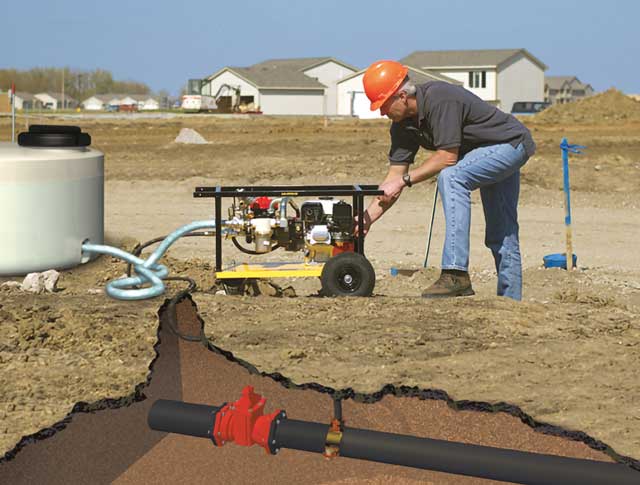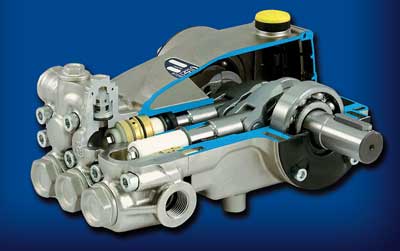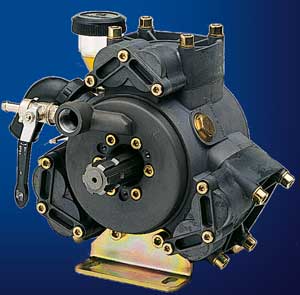
Plunger and diaphragm pumps are the choice for mobile units conducting hydrostatic tests on pipelines, explains Dual Pumps product development manager Tom Herridge
With pressure on utility companies to improve efficiency and minimise water loss, the practice of performing hydrostatic tests on the nation’s water supply network is a booming area of work.
The process involves isolating a section of pipeline, filling it with water, pressuring it to 20-30 bar, and recording any pressure drop over a set period of time. Provided the pressure is maintained, the section is approved. Modern systems typically log the relevant data to create an archive of tests and to aid future service work.
There is an array of pressure testing equipment on the market. However, the industry has settled on the use of electric motor or engine-driven driven plunger and diaphragm pumps for mobile test units aimed at hire and facilities management companies.
Both plunger and diaphragm types are positive displacement pumps which provide a constant fluid flow at any pressure up to the maximum working pressure of the pump. Another shared characteristic is that both pump types are self-priming, without the need to fill the suction hose prior to starting the unit up. Apart from this, the two types differ in important characteristics, which makes each suitable for slightly different applications.

Plunger-type pumps are typically downrated triplex pressure-washer pumps, fitted with pressure regulating valves suited to the relatively low system pressures used in pipeline testing rather than the high pressures used in pressure wash applications. These high efficiency pumps are used on lower flow test units, typically 6 to 15 litres/minute.
At such low flows the pumps maintain a very smooth fluid delivery, minimising the danger of pipeline damage. Plunger pumps are also capable of delivering much higher pressures should the application require it.
Diaphragm pumps are not able to run at the very high system pressures of plunger pumps, but they are capable of delivering high volumes (up to 200 litres/minute on mobile units) at up to 30 bar. Diaphragm pumps have excellent self-priming capabilities and are able to draw fluids from tanks or reservoirs up to 4m below the pump.

Diaphragm pumps can also handle lightly contaminated water containing small suspended particles and impurities, and are available in a variety of body and seal materials, making them suitable for handling a wide range of chemicals. Another useful characteristic of the diaphragm pump is its ability to be “run dry” for short periods without damaging the pump internals.
Depending on the configuration of the pump, fluid delivery can be less smooth than that of a plunger pump; however, this is easily overcome with pulsation dampers designed into the system or integrated into the pump itself.
Both plunger and diaphragm pumps can be driven by an engine, an electric motor or a hydraulic motor. Pipeline test units are typically fitted with pressure regulating valves, safety valves, and manual bypass (or “dump”) valves in various configurations, depending on the user’s requirements
Manifolds with ball valves and non-return valves can be integrated with test and measurement equipment, making the units easily customisable to suit customer or user needs.
The variety of control valve options makes such test units easily adaptable to suit many other pressure test applications such as valves, hose assemblies, tanks and vessels.
Established in 1975, Dual Pumps is a supplier of pumps, fluid handling components, agricultural and industrial spraying products, pressure washers, pressure wash accessories and cleaning equipment.
For more information visit www.dualpumps.co.uk or contact 01664 567226 or info@dualpumps.co.uk for a catalogue or to speak to technical advisers.

